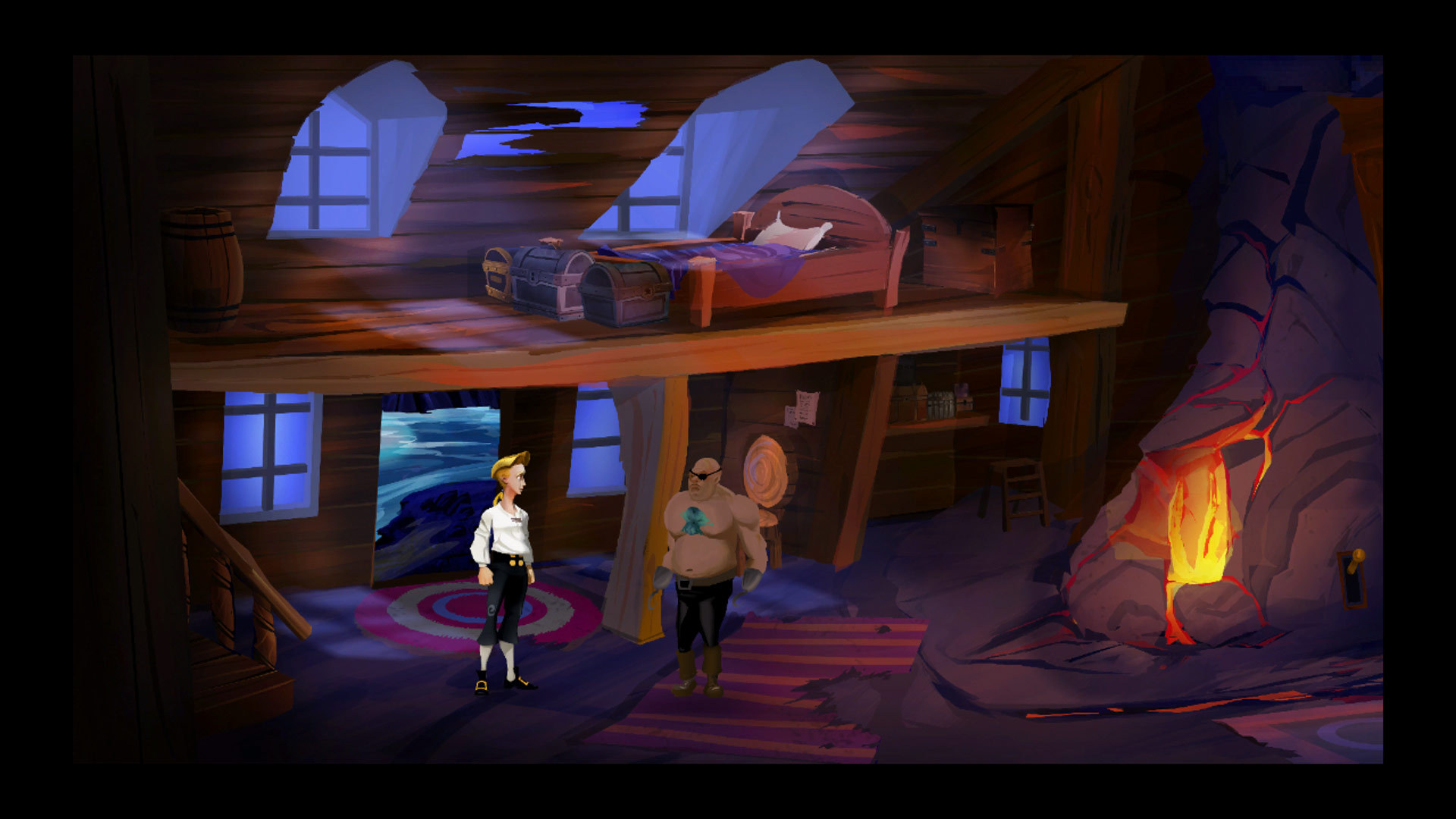

It’s an unnecessary refinement, and fiddly to use at first, but it’s ultimately harmless. The circle contains a picture symbolising what interaction you can do (a foot, say, to denote walking), and the tip of the pointer touches the thing you’re interacting with. Rather than a single crosshair for a cursor, there’s now a circle with a pointer attached.
#The secret of monkey island walkthrough special edition update#
The Special Edition is an update of the original in terms of interface and presentation, but the gameplay and dialogue are left, as far as I can gather, entirely intact. If you’re ready to bear arms at this act of sacrilege, there’s no need - by swiping two fingers across the screen you can change it to the old version at any time. Monkey Island: Special Edition came out recently on XBLA, and this is a version of that game rather than the original. The whole game is theoretically completable in a couple of hours, though it took me several weeks back in 1990. The puzzles that constitute the actual game are secondary to the story, for sure, and not all of them are winners, but Monkey Island for the most part manages the tricky balance of constructing puzzles that are neither obvious nor illogical, neither too hard nor too easy. In the opening scenes Guybrush tells some important-looking pirates, “I can hold my breath for ten minutes,” and the significance of that line becomes clear later on, after less attentive gamers (thickos) have forgotten that he ever said it. The writer Chekhov said that if there’s a gun on the mantle in the first act of a play it ought to go off in the third, and Monkey Island abides by this edict. Like all good works of fiction, it’s only when you play through the game a second or third time that you can fully appreciate it. All around him far more sinister characters - real pirates - are exploiting him and plotting his demise, but through persistence, dumb luck and your guiding hand he manages to triumph. He’ll apparently do whatever it takes to accomplish this, yet he’s far too good natured to understand what being a pirate really entails. Guybrush is an incompetent but optimistic youth whose guiding ambition is to be a pirate. The lasting appeal of Monkey Island is in its dialogue writing and in its central character. You’re controlling him to a large extent, but he’s also a beautifully drawn independent character whose endless buffoonery makes you laugh. Your control over Guybrush is limited in the sense that you can choose what he says in conversation, but only from a range of possible sentences you can tell him to pick things up, but if the object is irrelevant to the vast mechanism of progress Guybrush will find an excuse to disobey. Using a cursor to point and click, you have to guide Guybrush through fixed 2D backgrounds, picking up objects and deploying them to solve puzzles either singly or in combination with others in your inventory, as well as interacting with the scenery and talking to people. You take on the role of Guybrush Threepwood’s semi-potent carer as he sets out to become a pirate. Video game writing has rarely reached the same heights. Monkey Island’s heritage is in video games, of course, but it’s also in literature (as well as in the same Disneyland ride that spawned Pirates of the Caribbean). It was one of those satisfying moments when you discover a reference all by yourself. Wodehouse's Something Fresh, and a few pages in I came across a character called Freddie Threepwood. Now off you go.įor the rest of you cross-legged, wide-eyed innocents who’ve yet to embark with master Guybrush Threepwood on what may be the finest adventure ever committed to silicon, I’ll try to convey the sheer majesty of The Secret of Monkey Island: Special Edition without robbing you of the enviable joy of discovery by saying too much. If you’re anything like me, the only thing you want from this review is either an imperial thumbs-up, indicating that it does the franchise justice, or a thumbs-down, indicating that it disgraces it and deserves to be beheaded by a slave.


 0 kommentar(er)
0 kommentar(er)
